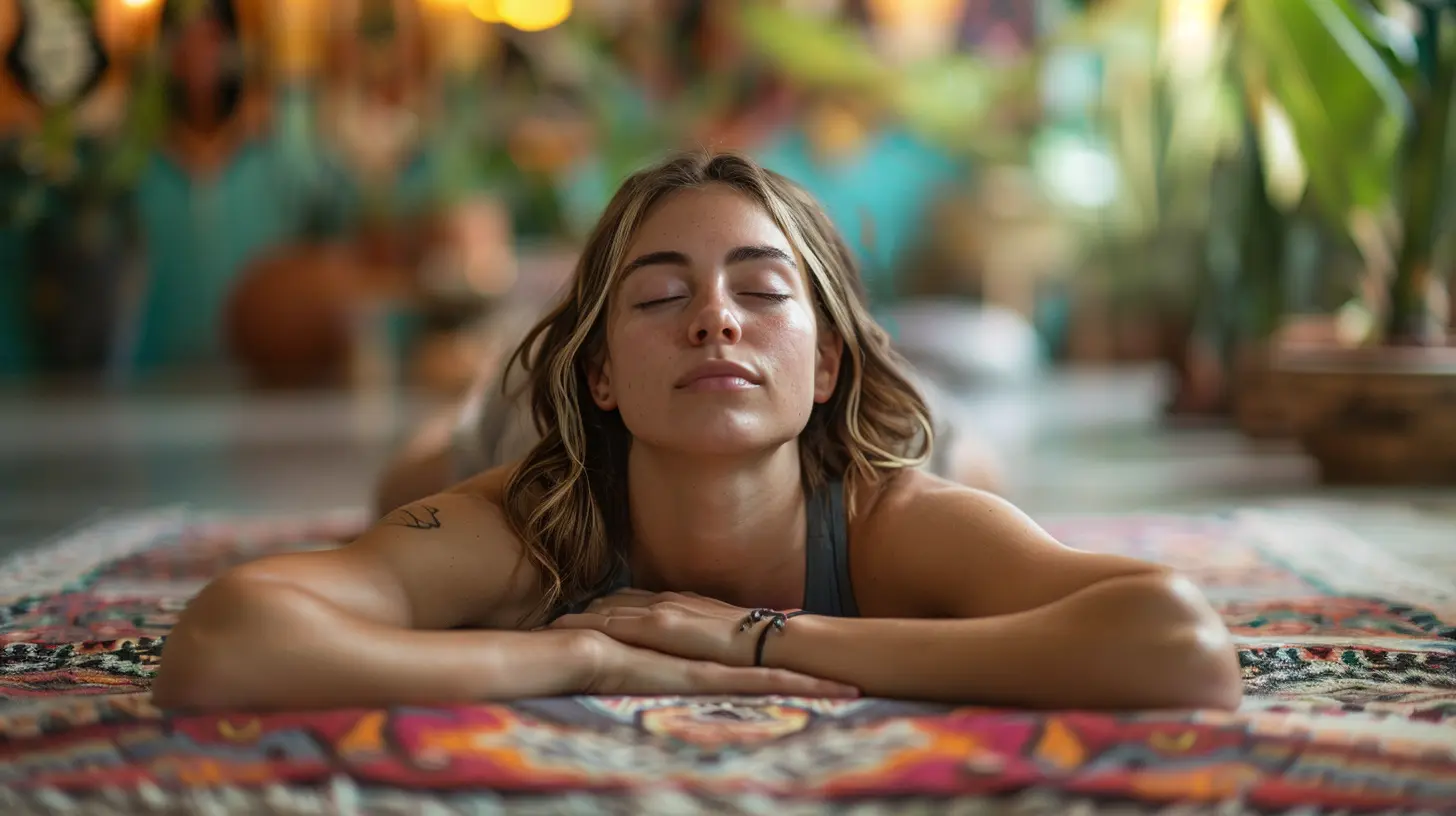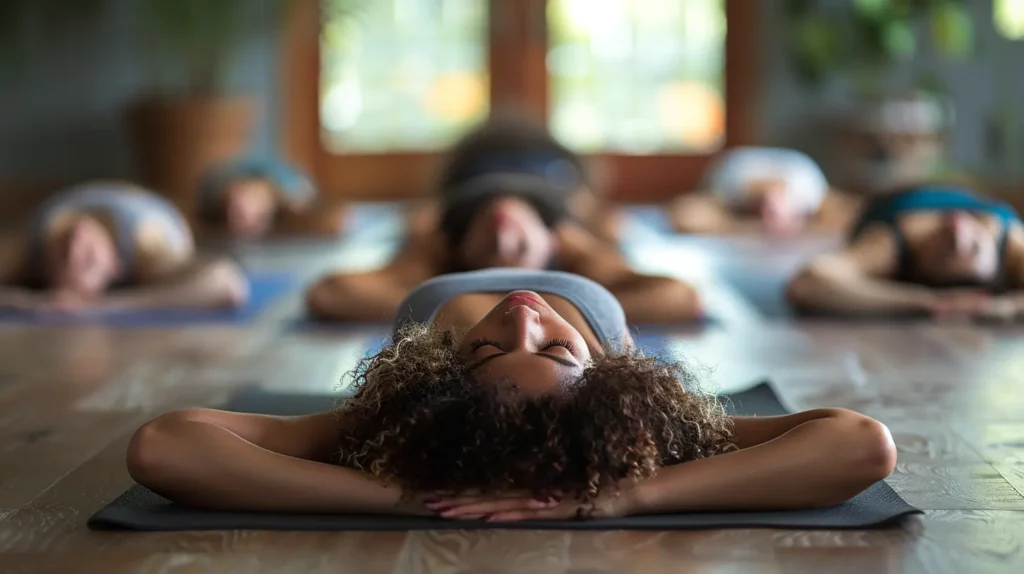
Newsletter Subscribe
Enter your email address below and subscribe to our newsletter

Enter your email address below and subscribe to our newsletter

Welcome to our blog post where we explore the world of restorative yoga poses. In today’s fast-paced world, finding moments of peace and calm can be a challenge. Restorative yoga offers a sanctuary of relaxation and rejuvenation, allowing you to unwind and recharge. Join us as we delve into the gentle yet powerful practice of restorative yoga poses, uncovering their benefits and techniques to help you find tranquility amidst the chaos of life.
Restorative yoga poses are a key component of a holistic yoga practice. These poses focus on relaxation, rejuvenation, and healing through gentle postures that allow the body to release tension and stress. Unlike more active forms of yoga, restorative yoga emphasizes slowing down, deep breathing, and staying in poses for an extended period to promote a sense of calm and balance.
Restorative yoga poses are often described as “active relaxation” where the body is fully supported using props such as bolsters, blankets, blocks, and straps. The aim is to create a comfortable and nurturing environment that allows the body to let go of tension and stress while promoting a sense of inner peace.
In conclusion, integrating restorative yoga poses into your yoga practice can offer a sanctuary for relaxation, healing, and rejuvenation. Whether you’re looking to unwind after a long day or foster a deeper mind-body connection, these gentle postures provide a soothing respite in today’s fast-paced world.
Restorative yoga is a gentle and therapeutic form of yoga that focuses on relaxation and rejuvenation. Incorporating restorative yoga poses into your wellness routine can bring a myriad of benefits to your physical, mental, and emotional well-being. Let’s delve into how these poses can help reduce stress and promote deep relaxation.
Incorporating restorative yoga poses into your wellness routine can be a transformative experience, providing a sanctuary for relaxation and self-care amidst the busyness of daily life. By reaping the physical, mental, and emotional benefits of restorative yoga, you can cultivate a sense of balance, peace, and well-being within yourself.

Restorative yoga is a gentle and calming practice that focuses on relaxation and stress relief. By using props to support the body in various poses, restorative yoga allows for a deep release of tension and promotes overall well-being. In this guide, we will walk you through some common restorative yoga poses, highlighting the importance of proper props and alignment for maximizing their benefits.
By practicing these restorative yoga poses with the proper props and alignment, you can experience a profound sense of relaxation and rejuvenation. Remember to listen to your body and make adjustments as needed to ensure a comfortable and restorative practice.
Restorative yoga is a gentle and calming practice that focuses on relaxation and stress relief. Incorporating restorative yoga poses into your routine can help you unwind, release tension, and promote overall well-being. Here are some of the most effective restorative yoga poses to try, along with variations to suit practitioners of different levels.
Incorporating these restorative yoga poses into your practice can help you find moments of calm and rejuvenation. Remember to listen to your body and adjust the poses as needed to ensure a comfortable experience.
In conclusion, restorative yoga poses offer a gentle and effective way to relax, release tension, and restore balance to both the body and mind. By incorporating these poses into a regular practice, individuals can experience improved overall well-being and better manage stress levels. Embracing the restorative benefits of yoga can lead to a more peaceful and balanced life.
Yes, restorative yoga poses can help with stress relief and relaxation. These poses typically involve gentle stretches and the use of props to support the body in various positions, allowing for deep relaxation and release of tension. Restorative yoga is known for its calming effect on the nervous system, promoting a sense of peace and relaxation which can help reduce stress and anxiety. Regular practice of restorative yoga can be beneficial for managing stress and improving overall well-being.
Restorative yoga poses are characterized by being passive, gentle, and supported postures which allow the body to fully relax and release tension. These poses typically involve the use of props such as blankets, bolsters, and blocks to support the body in a comfortable position, promoting deep relaxation and rejuvenation. The primary goal of restorative yoga is to activate the parasympathetic nervous system, helping to reduce stress, calm the mind, and restore balance to the body.
In restorative yoga, it is recommended to hold each pose for 5-20 minutes in order to achieve maximum benefits. Holding the poses for an extended period of time allows the body to relax deeply, release tension, and activate the parasympathetic nervous system, promoting relaxation and stress relief.
Restorative yoga poses are different from other types of yoga poses in that they are specifically designed to promote relaxation and stress relief. Restorative poses are typically passive and involve the use of props like blankets, bolsters, and blocks to support the body in gentle stretches. These poses are held for longer periods of time, allowing the body to fully relax and release tension. In contrast, other types of yoga poses, such as vinyasa or power yoga, are more dynamic and focus on building strength, flexibility, and endurance.
Yes, there are contraindications and precautions to consider when practicing restorative yoga poses. Some common contraindications include recent injuries, certain medical conditions like uncontrolled high blood pressure or glaucoma, pregnancy (certain poses are not recommended during pregnancy), and any condition that restricts movement or causes pain. It is important to consult with a healthcare provider or a qualified yoga instructor before practicing restorative yoga, especially if you have any underlying health concerns.
Restorative yoga poses offer several benefits, including reducing stress and anxiety, promoting relaxation, improving flexibility and range of motion, enhancing circulation, aiding in better sleep, and helping to calm the nervous system. These poses are gentle and restful, making them accessible to individuals of all fitness levels. Additionally, practicing restorative yoga can help balance the body and mind, leading to an overall sense of well-being and rejuvenation.
Yes, there are several restorative yoga poses that are recommended for beginners. Some common restorative yoga poses for beginners include Child’s Pose (Balasana), Legs-Up-The-Wall Pose (Viparita Karani), Reclining Bound Angle Pose (Supta Baddha Konasana), and Corpse Pose (Savasana). These poses are gentle, relaxing, and can help reduce stress and promote relaxation. It is always advisable to consult with a certified yoga instructor before starting any new yoga practice, especially if you are a beginner.
Comments are closed.
I found this article very informative and helpful in understanding restorative yoga poses.
I appreciate the detailed explanation of each pose and how they benefit the body and mind.
It would be great to see more visuals or videos demonstrating the poses for better understanding.
Could you suggest some beginner-friendly restorative poses to start with?